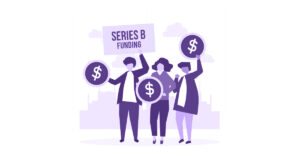
One in three French adults suffer from chronic pain. According to an STPC study which surveyed 2,154 participants from various professional sectors, sufferers of chronic pain struggle more to engage with their work and find it harder to adjust to organisational shifts in the workplace. They are also more likely to feel unfairly treated by their company.
Chronic pain can seriously impact sufferers’ professional life and mental health. And, because of the difficulties involved in accurately evaluating patients’ pain levels, it is complicated to treat. French startup Santé NET, founded by Sébastien Jaricot, developed MIA (My Intelligent Assistant) Healthcare to help sufferers of chronic pain and their caregivers. 150sec spoke to Jaricot to find out more.
“There are studies that show that half of people with chronic pain suffer from anxiety or depression at some point because of their pain,” he said.

Difficulties arise, however, when carers try to ascertain a patient’s pain levels, since sensations are inherently hard for patients to express. There is also variance in responses according to the patient’s sensitivity and threshold.
Sufferers of chronic pain often find themselves at an appointment describing pain they experienced days, even weeks, ago. In such instances, memory often distorts their assessment.
The French public research institution focused on health and medicine Inserm describes pain as “an unpleasant sensory and emotional experience which is difficult to quantify and qualify.”
“And that’s where we come in,” Jaricot commented. “We qualify and quantify that which is sensory and emotional.”
“A true personal assistant”
With Application MIA, available to software editors and hospitals, patients have a virtual assistant. The bot regularly asks them questions about their pain intensity, morale, fatigue, environment and how frequently they are taking medication. This allows patients to spontaneously note pain as it occurs, relaying the information to their carer and keeping them informed.
It allows medical professionals to clearly identify when a patient needs to take a sleeping pill, for example. This also helps to combat the over-reliance on powerful and highly addictive analgesics like morphine, which is seen too often as “a solution to everything,” Jaricot believes.
AI advises patients and alerts caregivers
“Thanks to our algorithms, the application allows the patient to manage his pain autonomously with personalised therapeutic advice based on the data provided by the patient,” Jaricot explained.
There is also an alarm system in place which monitors the patient’s habits, such as how often they smoke, drink and take their medication. This means that potentially dangerous irregularities can be quickly identified. Through the monitoring of these habits, the application prioritises patients for the caregiver according to urgency. If the patient stops using the application, this will also send an alert to the caregiver.
Crucially, this allows for a quick response to signs of a patient falling into depression. Caregivers alone cannot sufficiently monitor this risk. “A doctor could therefore see a patient in sound mental health and three weeks later he could be in deep depression,” Jaricot pointed out. “With our system of telemonitoring, these signs can be flagged up,” he said.
Not perfect, but perhaps the best solution
When indicating pain intensity, patients still use the 1-10 scale, “which is very relative,” Jaricot explained. The application does attempt to address this problem by creating user profiles for patients, such as hypochondriac, insensitive, or plaintive.
User profiles are established by looking at a range of data, such as the number of times a patient reports feeling more intense pain. The information sent to carers is then adapted to account for the user profile of the patients, in the hope of reaching a more accurate response.
However, this seems like a problematic system as it is hard to distinguish between a patient being unusually sensitive and a patient suffering from particularly severe chronic pain.
In France, other enterprises have used AI to assess pain levels in novel ways. Such methods include facial recognition technology, which notes movements like furrowed eyebrows, squeezed lips and raised cheeks to calculate pain levels. This kind of technology can be used by anesthetists when determining the dose of morphine required for a patient.
Impressive though these advances are, they are only useful in treating sharp, short-lasting pain, explained Jaricot. With chronic sufferers who endure pain for a long time, the body’s alarm system stops working in a way which can be monitored by such technology. “All those with chronic pain learn to wear a mask,” he reflected wryly.
Ultimately, there are limitations to what AI can achieve when it comes to alleviating chronic pain. Nevertheless, working within them, applications like MIA Healthcare do help patients to manage their pain and the issues that come with it.




